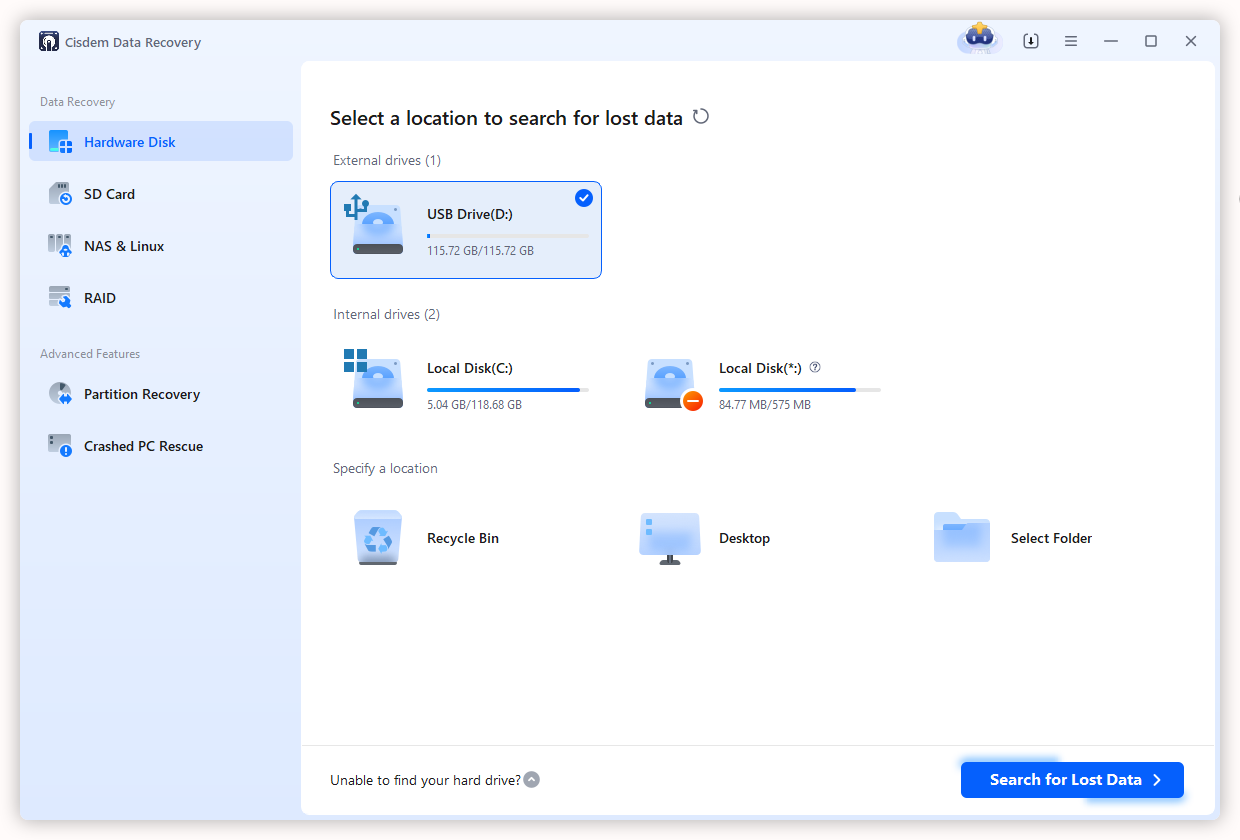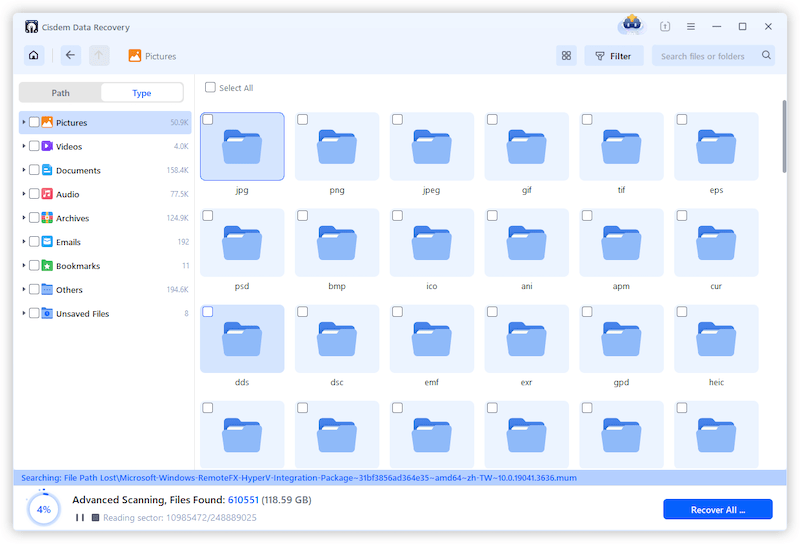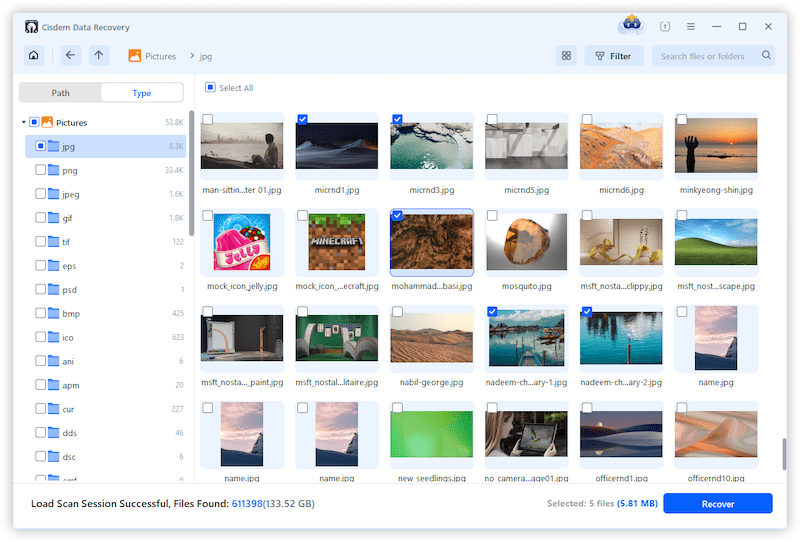[11 Fixes] How to Restore Desktop Icons on Windows 10 and 11?
 6.7K
6.7K
 0
0
Shortcut icons on desktop give a quick access to those applications or utilities we frequently use, greatly saving time and simplifying steps when we work with computer. The point is that quite a few PC users have reported they found their desktop icons missing somehow. Disappeared desktop icons will apparently cause us much inconvenience.
That’s what this article comes for. To address this annoying issue, here 11 pieces of tips on how to restore desktop icons in Windows 10 and 11 are gathered, to provide the most comprehensive guide ever.
 Cisdem Data Recovery for Windows
Cisdem Data Recovery for Windows
Folders/Files Lost After Desktop Icons Disappearing? Restore!
- Recover lost data directly from Windows Desktop
- Restore more than 1000 type of desktop files
- Get back desktop files/folders from from deleting, formatting, partition loss, system crash, virus attack and any data loss scenarios
- Fix corrupted photos and videos
- Support crashed PC, NAS, Linux recovery
- High recovery rate and fast scanning speed
- Preview recoverable files before recovery
 Free Download Windows 11/10/8/7
Free Download Windows 11/10/8/7How to Restore Desktop Icons in Windows 10 and 11?
1# Restore desktop icons from OneDrive
One real case in Microsoft Community is stated as: “I signed into OneDrive and updated my PC then clicked on Stop syncing, then all icons off my desktop disappeared”. If you have the same or similar question, how to restore desktop icons from OneDrive?
Bear in mind that when OneDrive PC Folder Backup for your desktop is turned off, the computer screen will switch from displaying the Desktop folder located at C:\Users\username\OneDrive\Desktop to displaying the folder at C:\Users\username\Desktop.
Therefore, you may get icons back on desktop simply by going to the Desktop folder in your OneDrive folder and moving the contents to the Desktop folder at C:\Users\username\Desktop.
![]()
2# Turn on "Show desktop icons"
In case that all of the desktop icons disappear in Windows 10/11, the desktop icon visibility is possible to have been toggled off by accident. See below for the steps to easily enable “Show desktop icons”.
- Right-click on any empty space on the desktop.
- Choose View option.
- Tick “Show desktop icons”.
![enable show desktop icons]()
3# Check Desktop Icon Settings
If only a part of system icons are missing from your desktop, such as This PC, Recycle Bin, Control Panel, Network, etc., these icons might have been disabled in Desktop Icon Settings window. To get icons back on desktop, please follow up the tutorial below.
- Go to Start menu > click Settings to launch this app.
![check desktop icon settings 01]()
- Choose Personalization > Themes.
![check desktop icon settings 02]()
- Under Related settings section, select Desktop icon settings.
![check desktop icon settings 03]()
- On the Desktop Icon Settings, tick the specific checkboxes to enable the system icons that you want on desktop. Click Apply and OK to save the changes.
![check desktop icon settings 04]()
4# Disable Tablet mode
Those devices with a touch screen are always designed with 2 types of screen modes: Tablet mode and Desktop mode. If the Tablet mode is enabled, some desktop icons will be hidden to make the PC more friendly to touch function. This is how to fix desktop icons not displaying correctly in Windows 10/11 by turning off Tablet mode.
- Click Start > Settings > System.
- From the left-side panel, toggle off the Tablet mode.
![disable tablet mode]()
- Restart your PC to see whether the desktop icons missing error has been fixed.
5# Rebuild icon cache
Another feasible path to restore icons on Windows 10/11 desktop is to rebuild the icon cache. The Command Prompt program will be utilized in this method, involving several different command lines. Just carefully check the following instructions step by step, since any slight changes made to the commands will potentially bring up more troubles.
- Press Windows + R to open Run window.
- Input “cmd” > hit Enter to launch Command Prompt.
![rebuild icon cache 01]()
- Type the following command lines, and press Enter in-between each new line.
- taskkill /F /IM explorer.exe
- cd / %userprofile%\AppData\Local
- attrib -h IconCache.db
- del IconCache.db
- start explorer.exe
![]()
- Restart your Windows system to verify if the disappeared desktop icons show up successfully.
6# Perform SFC scan
Providing the lost desktop icons issue is resulted from damaged system files on Windows 10/11, you can try to run a SFC scan to restore icons to desktop. SFC scan is also called System File Checker, which is a Windows tool set by default to repair corrupted issues. Here’s how to achieve it.
- Run CMD as administrator.
![perform sfc scan 01]()
- Type SFC/scannow > hit Enter.
![perform sfc scan 02]()
- SFC will begin to scan and repair any problematic files within your PC. After the repairing finished, restart the computer to check whether your missing icons reappear on desktop.
7# Check Group Policy Settings
Also, once your desktop icons are disabled from Local Group Policy Editor, surely you’re not allowed to manage or access the icons as normal. In this case we should go to disable an option named “Hide and disable all items on the desktop” so that we can regain the desktop icons properly.
- Press Windows + R to launch Run utility on your PC.
- Input gpedit.msc > click OK to open the Local Group Policy Editor.
![check group policy settings 01]()
- Head over to User Configuration > Administrative Templates > Desktop.
![check group policy settings 02]()
- Find the policy “Hide and disable all items on the desktop” > double click on it.
![check group policy settings 03]()
- Choose Not Configured or Disabled.
![check group policy settings 04]()
- Finally select Apply followed by OK button.
8# Run system restore
In the event that the icons disappeared from desktop on Windows 10 or 11 after you updated the PC’s configuration or installed a new application, the solution could be performing a system restore to recover Windows to a previous condition where the desktop icons are still present. Let’s walk through the steps to restore desktop icons on Windows 10/11 by running system restore.
- Right-click on Start menu > select Run.
![run system restore 01]()
- Type rstrui.exe into the box > click OK to enter System Restore.
![run system restore 02]()
- Click Next to continue.
![run system restore 03]()
- Choose a restore point before your desktop icons disappeared > tap on Next.
![run system restore 04]()
- Confirm the restore point you select > click Finish to start the system restore.
![run system restore 05]()
- After the completion of system restore, your desktop icons will be hopefully restored.
9# Update Windows version
Windows version upgrading is treated as an omnipotent way to fix all kinds of system problems on our PC. Fortunately, this practice is also proven by many users to be capable of getting the desktop icons back on Windows 10/11. Here’s the guide.
- Navigate to Start > Settings.
- Select Update & Security tab.
![update windows version 01]()
- In Windows Update section, click Check for updates.
![update windows version 02]()
- If any update is found, click Install button to download the new version of Windows 10/11.
10# Reset Windows OS
Likewise, to reset the Windows system is also an effective approach to cope with some troublesome issues you encounter on your device. How to restore desktop icons via resetting Windows OS? Read on.
- Go to Start > Settings > Recovery.
![reset windows 01]()
- Click Reset PC under Recovery options.
![reset windows 02]()
- Choose between “Keep my files” or “Remove everything”.
![reset windows 03]()
- Proceed with the subsequent on-screen prompts to do the PC reset.
11# Manually add desktop icons
Until now if none of the above tips work out to restore your desktop icons on Windows 10/11, our final wit is to manually add shortcut icons to desktop. The restore process is quite easy. Let’s start.
- Select Start menu > All apps list.
- Find the app you need.
![add desktop icons]()
- Drag and drop the app from the list to desktop. Now the desktop shortcut icon is showing up again.
How to Recover Desktop Folders/Files in Windows 10 and 11?
Suppose that you have failed to restore the missing desktop icons at the very end, desktop folder or files lost might also come with you. As for recovering the deleted/lost desktop files on Windows 10 or 11, a dedicated data recovery program should always be your top priority.
Here we highly recommend Cisdem Data Recovery for Windows to you. Thanks to its advanced algorithm and strong development team, this top-notch software ensures a pretty high success rate of recovery. Cisdem has the ability to retrieve desktop files in more than 1000 types, like document, photo, video, audio, archive, email, etc.
Main features of Cisdem Data Recovery:
- Recover folders/files from Desktop specifically
- Support PC recovery, SD Card recovery, NAS recovery, Crashed recovery and more
- Repair damaged videos, photos and documents
- Support data recovery from PC internal drive, USB flash drive, digital camera, HDD, etc.
- Quick scan and advanced scan both applied to find most files
- Preview desktop files before recovery
- Compatible with Windows 11/10/8/7/XP
How to recover desktop folders/files in Windows 10/11 with Cisdem?
- Download and install Cisdem Data Recovery for Windows on your PC.
 Free Download Windows 11/10/8/7
Free Download Windows 11/10/8/7 - Open this program > choose PC Recovery > move to Desktop location > click Search for Lost Data to start.
![recover desktop files with cisdem 01]()
- After scanning, look through the folders or use filters to find your missing desktop files quickly.
![recover desktop files with cisdem 02]()
- Select the wanted data and click Recover to revert them back onto your Windows 10/11 PC.
![recover desktop files with cisdem 03]()

Zoey shows a great interest in what she does. Although not long with Cisdem, she has possessed a professional understanding of data recovery.

JK Tam is the lead developer at Cisdem, bringing over two decades of hands-on experience in cross-platform software development to the editorial team. He is now the lead technical approver for all articles related to Data Recovery and DVD Burner.























